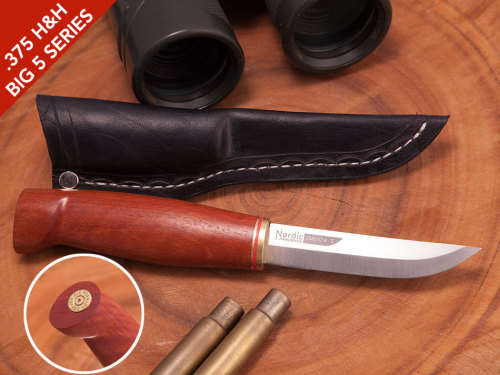A knifeless man is a lifeless man
an old scandinavian proverb We are proud to present our hand-made Viking survival / hunting knives. These knives are created individually in Port Elizabeth, South Africa. Because our knives are intended as working knives, the blades are satin finished to prevent scratches from showing after hard use. We only use the best knife steels imported from Finland. Everything on our knives is done by hand using traditional methods and as such each knife is unique with a serial number in the black blade part of the logo.
BIG 5 SERIES!
Knife details:
- Serial number: 20201014-C
- Construction - Full tang (hidden)
- Blade Material: X50CrMoV15 - Scandinavian Stainless Steel, tempered to 57-58 HRC
- Blade length: 95mm
- Blade depth: 18mm
- Blade thickness: 3.2mm
- Handle Material: African Teak
- Hand Hammer Finished Solid Brass bolsters
- Inset: .375 H&H Caliber
- Sheath - Hand stitched full-grain vegetable tanned leather
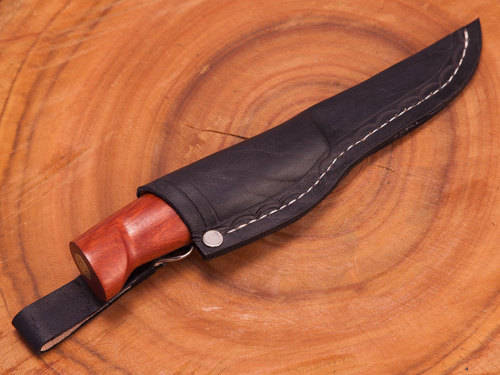
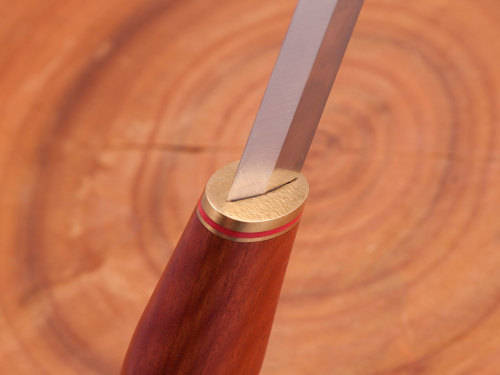
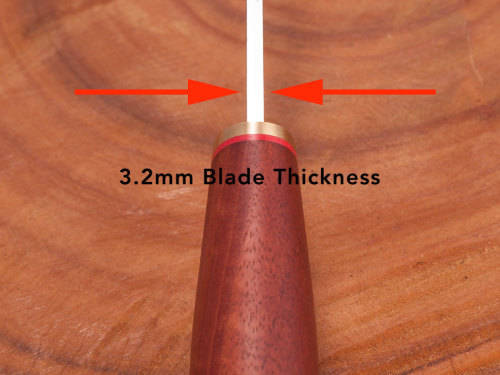
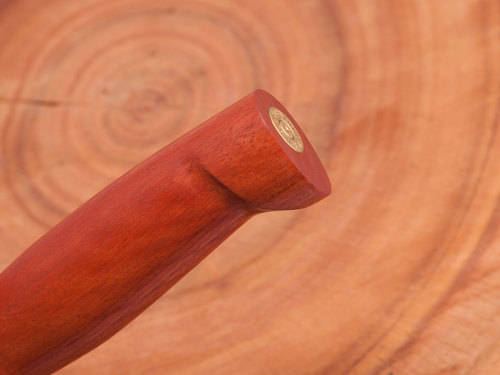
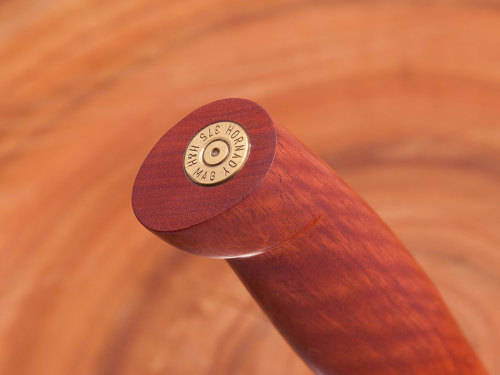
History of the Puuko (Viking) knife:
The Sami people of the Scandinavian countries typically use two knives; the smaller called a buiku, puukko (small knife); while the larger "Sami knife" is called stuorra niibi (big knife). An even larger version known as a Väkipuukko is similar to a Seax. The Vikings adopted this pattern which has remained unchanged for over a thousand years. It became their multi-purpose knife for work and war and is still used today for everyday tasks like woodcarving, hunting, fishing and general food preparation.
The prototypical Scandinavian knife is a fixed blade knife with a simple yet functional blade profile, featuring a straight spine, or a slightly dropped or upswept point. The distinctive, wide beveled "scandi grind" is used to form the sharpened edge. We use the Scandinavian (Also known as Sabre grind) with a micro bevel for optimum blade strength and sharpness.
The length, girth and shape of the handle is designed to give a secure and comfortable grip when the knife is being used. Typically, the only hardware on the handle is a simple bolster or ferrule at the front, plus a brass nut clamped or peened onto the end of the tang, where it protrudes slightly out of the butt of the handle. Metal finger guards, butt caps, or pommels are the exception, rather than the rule.
Sensible blade lengths of 95mm are most common although this can vary from as short as 60mm to as much as 110mm.

Above is an example of a Puuko that was recovered from a Viking grave. Other than the thickness of the blade and minor cosmetic details, puukkos have remained unchanged for at least 2000 years. The blade became thinner as metallurgy improved, though the edge angle remained the same, thus the modern 'scandi' grind. This example is about 1000 years old, from Norway.
TERMS AND CONDITIONS:
- We endeavor to maintain the highest standards of customer care. Please contact us before you give a neutral or negative rating.
- We make use of courier services only - We do not use SAPO
- No collections for security purposes
- Please check the shipping costs (If you do not agree, do not bid)
- We only ship to addresses in South Africa
- Ensure that you know what you are bidding on
- Please check photographs and description carefully BEFORE bidding
- Returned items are subject to a 25% re-stocking fee.
- Shipping is not refundable
- The seller reserves the right to accept / delete bids at our discretion
- If payment is not made within seven (7) days after the auction has closed, the item will be re-listed and an SNC filed against the buyer
- Please feel free to ask questions if you are unsure of anything
- Thank you for your support











